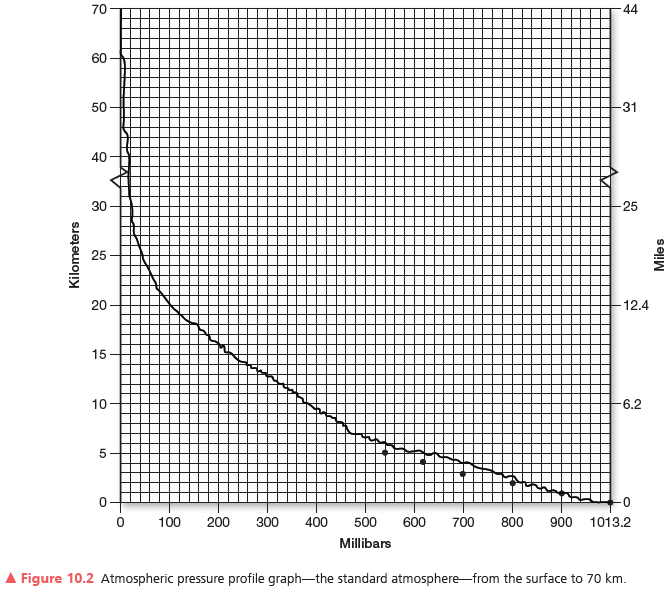In 2016, floods were responsible for about 40% of the fatalities.
Answer the following statement true (T) or false (F)
False
You might also like to view...
The information in Table 10.2 allows a determination of the rate of pressure decrease with altitude, which is not at a constant rate. Remember that half of the weight of the total atmosphere occurs below 5500 m (18,000 ft); at that altitude only about half of the total atoms and molecules of atmospheric gases remain to form the mass of the atmosphere. Determine the decrease in pressure between the following altitudes. Express the difference in millibars and inches of mercury. (Conversions are presented earlier in this section.)

1 km interval difference in pressure:
0 and 1 km ______________ mb; ______________ in. Hg
2 and 3 km ______________ mb; ______________ in. Hg
5 and 6 km ______________ mb; ______________ in. Hg
8 and 9 km ______________ mb; ______________ in. Hg
9 and 10 km ______________ mb; ______________ in. Hg
10 km interval difference in pressure:
0 and 10 km ______________ mb; ______________ in. Hg
10 and 20 km ______________ mb; ______________ in. Hg
20 and 30 km ______________ mb; ______________ in. Hg
40 and 50 km ______________ mb; ______________ in. Hg
60 and 70 km ______________ mb; ______________ in. Hg
Static stability:
A) is similar to buoyancy. B) is unrelated to adiabatic cooling. C) is unaffected by the temperature of the air parcel. D) is unaffected by the density of the air parcel.
How does acid deposition form, and what are three important impacts that it has on the environment?
What will be an ideal response?
How are joints different from faults?
What will be an ideal response?